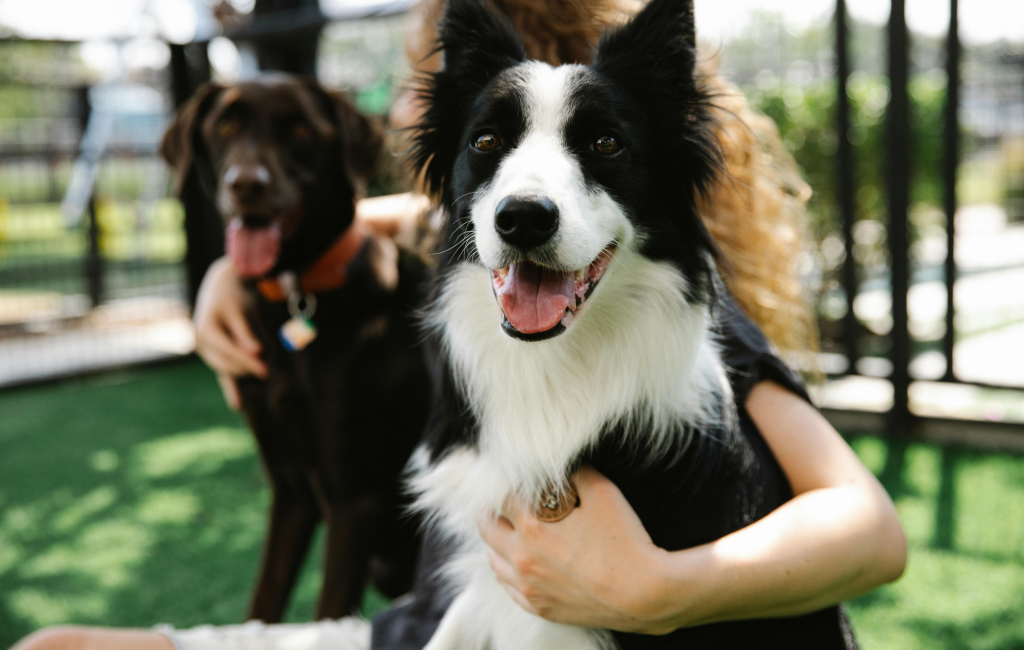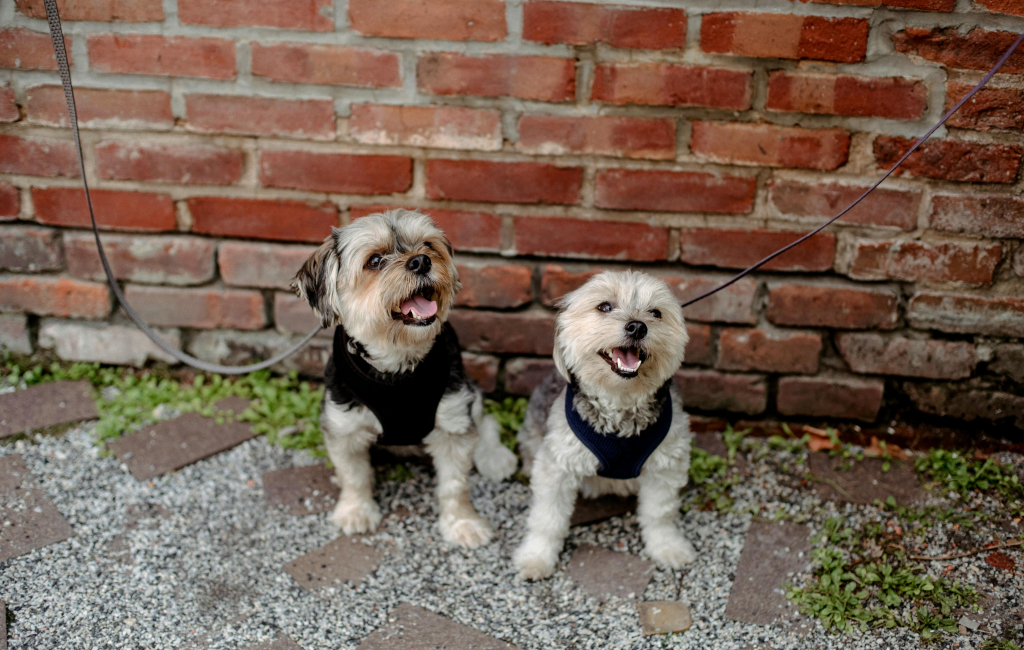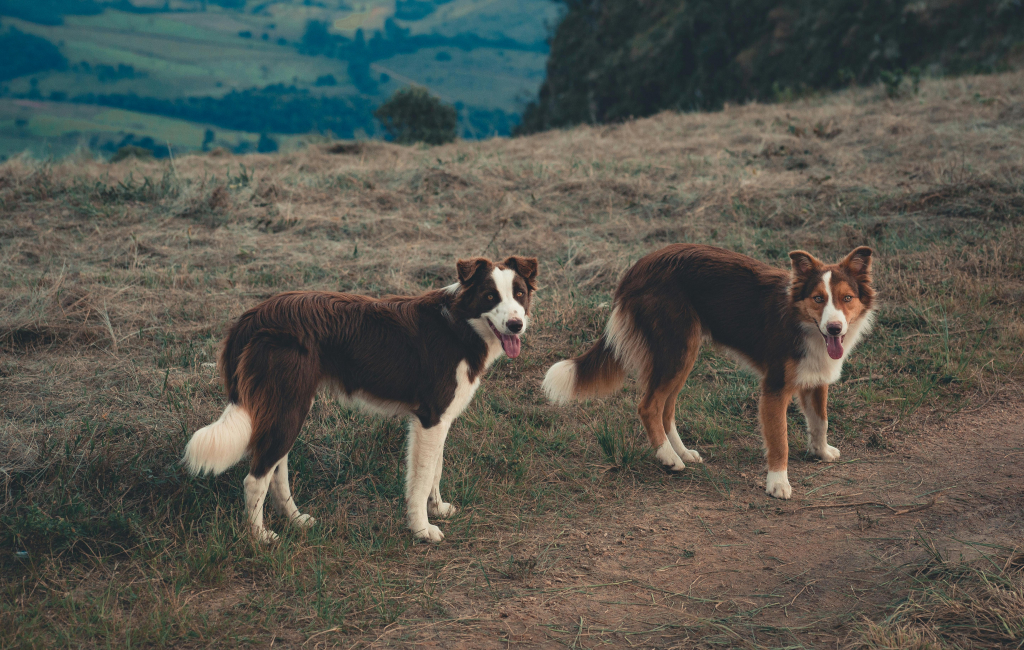There’s nothing quite like the love of a dog. They’re our companions, our exercise buddies, our couch snuggle partners, and for many of us, one just doesn’t feel like enough.
If you’ve found yourself wondering, “Should I get a second dog?” you are not alone. It’s a common question among dog parents, especially when your first pup has settled into a routine. The idea of giving them a best mate for life can be very tempting. But, just like your first dog, this decision needs careful thought and planning.
At K9 Heaven, we work with all kinds of multi-dog families from smooth-sailing duos to pairs that need a bit of help learning how to co-exist. If you’re considering adding another wagging tail to your life, we’ve put together a guide to help you weigh up the pros and cons, navigate introductions, and manage your multi-dog household.
The Benefits of Having a Second Dog

A Companion for your dog
Dogs are social animals. If your current dog enjoys the company of other pups, a lifelong pal can offer constant friendship and stimulation even when you’re busy. Two dogs can keep each other entertained and burn energy through play. It’s a joy to watch them romp around together, especially when they’re well-matched in energy and personality.
Enrichment and learning opportunities
A second dog can be a fantastic role model, helping your first dog learn better social skills, adapt to new routines, and pick up on positive behaviours like calm greetings, sharing space, or walking nicely on the lead. Dogs often learn best by observing one another, so if your new pup is well-trained and confident, their good habits can rub off, or vice versa. For example, your older dog might be the one showing the ropes, or they could pick up a few cheeky behaviours from their new sibling. Either way, the learning goes both ways, and with the right guidance, it can lead to a beautifully balanced bond.
Improves socialisation
Dogs are naturally social animals, and having a sibling around can help boost their confidence and communication skills. With a second dog in the home, your pup gets daily practice reading canine body language, setting boundaries, and learning appropriate play. They learn how to take turns, share space, and resolve disagreements.
This constant interaction often translates to better behaviour around other dogs too. You might notice your dog becoming more relaxed during walks or more confident in new environments. Of course, every dog is different, and proper introductions and supervision are key. When it’s done right, a second dog can be a positive influence that encourages balanced, well-mannered behaviour at home and in the great outdoors.
Dogs thrive when they have regular, healthy social interactions, and a second dog can offer that and more, every single day.
The challenges of getting a second dog

Higher costs
When you bring a second dog into your family, you’re not just adding another bowl to your home. Every part of your budget needs to stretch a little further. That means more dog food, more treats, more toys, and double the vet bills for annual check-ups, vaccinations, and ongoing preventative care.
Grooming costs can climb too, especially for breeds that require regular trims or professional maintenance. If your new pup needs help with training, you’ll also want to factor in the cost of classes or private sessions. If you’re someone who goes away regularly, you’ll also need to plan for overnight boarding or pet-sitting for two dogs instead of one.
More time and responsibility
While having two dogs can be incredibly rewarding, it also means you’re managing double the needs when it comes to structure and support. Each dog will need individual time with you to build trust, reinforce good habits, and learn your house rules. Even if one is well-trained, the other might be just starting out, or have very different behaviours and needs.
Every dog needs quality one-on-one time with their human to feel secure and connected. In a multi-dog household, it’s easy for one dog to unintentionally take the spotlight. Making sure both dogs feel equally loved, seen, and supported helps prevent jealousy and keeps the peace at home.
The early days will require patience, consistency, and a good dose of flexibility. But with the right approach, routines will settle and your two pups will soon be in sync, bringing double the joy to your day.
Potential behavioural issues & personality clashes
While the idea of bringing a second dog home might sound exciting, your current doggo may not agree. Some dogs are naturally territorial or a little anxious when it comes to change. They might feel protective of their space, toys, or even you, and a new dog can feel like a disruption to their well-established routine.
It’s also important to remember that not every dog is a social butterfly. Some are more independent or introverted and simply prefer one-on-one time with their humans over constant companionship. For these dogs, a second dog could feel more like a stressor than a playmate.
Another thing to consider is that if one dog has separation anxiety or disruptive behaviours like chewing or barking, those behaviours can sometimes transfer to the new dog. Before jumping in, assess your current dog’s temperament, energy levels, and social skills before introducing them to a lifelong mate.
How to introduce your new dog to your current dog

A good first impression sets the tone for your dogs’ future relationship, so take it slow, be thoughtful, and don’t rush the process. To help you get started, here are our top tips for making those early introductions smooth and stress-free for both you and your furry crew.
1. Choose a neutral meeting spot
Start your first introduction outside the home, where neither dog feels territorial. A quiet park or open space works well. Both dogs should be on leads, but try to keep them loose and relaxed.
2. Let them sniff, observe, and move naturally
Dogs like to get to know each other in their own special way. Allow them to read each other’s body language and sniff to their heart’s content. Look for loose tails, wiggly bodies, and soft eyes. If either seems stiff, growly, or overly excitable, take a step back and let them settle before trying again.
3. Go for a parallel walk
Walking side by side (at a distance) is a great way for dogs to bond without direct pressure. Over time, you can close the gap and allow more interaction if things are going well.
4. Bring them home—one step at a time
When it’s time to head inside, bring the new dog in after your current dog has had a chance to settle in. Remove toys, food bowls, and high-value items to avoid resource guarding.
5. Supervise and separate when needed
In the early days, never leave the dogs alone unsupervised. Crate training, baby gates, or separate rooms can help give both dogs space to decompress.
6. Watch for signs of stress
During all introductions, keep an eye on body language. Excessive panting, hiding, snapping, or barking are all signs that things may be moving too fast. Remember, introductions can take hours, days, or even weeks, depending on your dogs. Be patient and trust the process.
Final Thoughts
Welcoming a second dog can be an incredibly rewarding experience for you and your current pup. Just like any big decision, it requires thought, preparation, and a healthy dose of patience.
Make sure your lifestyle, home, and first dog are truly ready for the change. Take your time to find the right match and when you bring your new dog home, invest time into helping them build their bond.
At K9 Heaven, we’re proud to be part of so many multi-dog journeys. Whether you need help with socialisation, enrichment, or just giving your dogs a safe place to play while you’re at work, we’re here for you.
Find out more about our services here.






